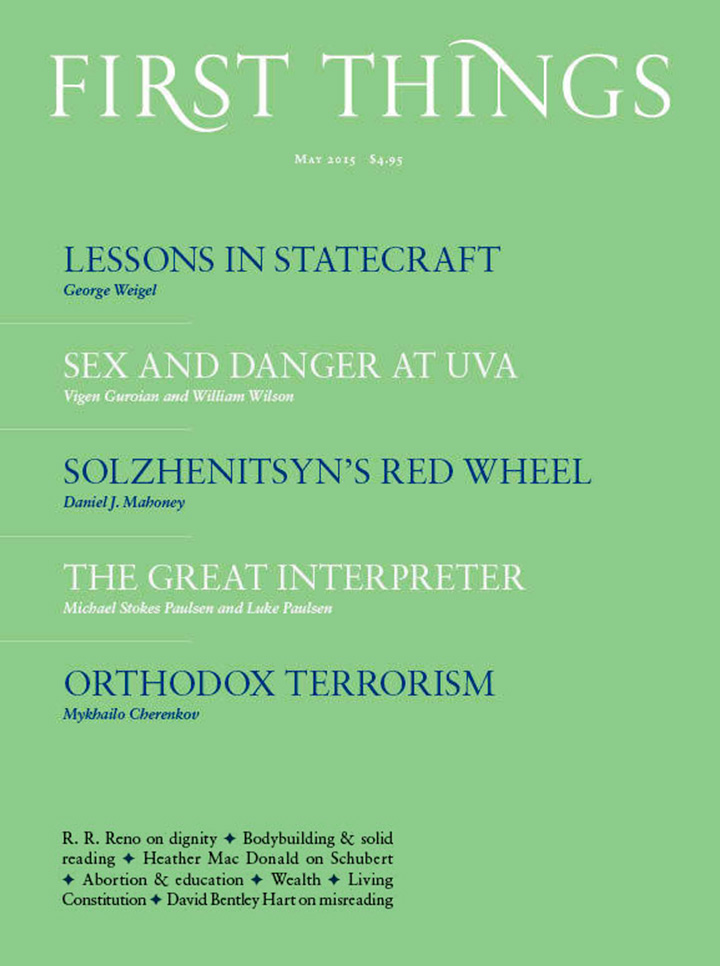This past November, Rolling Stone magazine published an article that told the story of a gang rape in a fraternity house at the University of Virginia. This report soon became national news. When we first saw the article, we were uncomfortably reminded of Tom Wolfe’s 2004 novel, I Am Charlotte Simmons, about sex on the college scene. We ought to have concluded immediately that what we were reading was fiction, as turned out to be the case. Our experience, however, predisposed us to assume that something like that which had been described may have happened.
There was uproar and a great deal of administrative action taken after the Rolling Stone article was published. But it is not credible that before the piece, the administration was unaware of the sexual chaos in student life. For nearly a decade, Bill Wilson was dean of the Echols Scholars Program at the university. He and others in similar positions reported to the administration what they had heard. Dozens of bright young college women told Wilson that they had been sexually humiliated, assaulted, or raped. Yet the administration’s routine response was, “There are professional programs, codes, procedures, policies, and referrals in place.” Indeed, the psychologists and therapists were already in place, the legal teams assembled, long before the storm over the Rolling Stone article.

